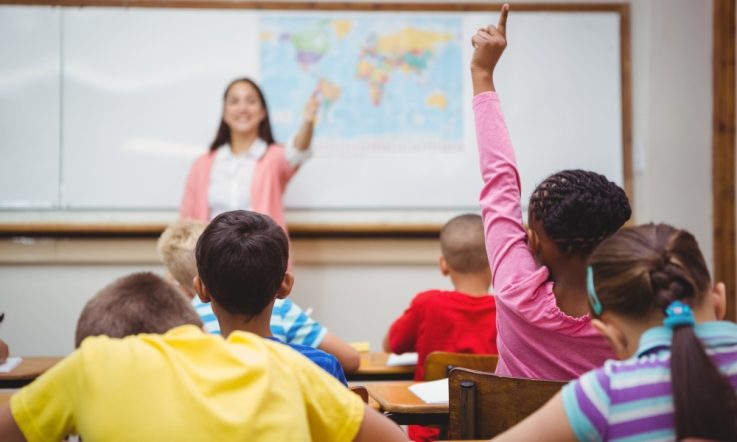Further analysis of Australian results from two large-scale international assessments highlight a ‘worrying' decline in the achievement of disadvantaged students.
According to two reports released today by the Australian Council for Educational Research (ACER) – TIMSS 2015: Reporting Australia's results and PISA 2015: Reporting Australia's results – the gap between advantaged and disadvantaged students has barely narrowed over the last 15 years.
TIMSS (the Trends in International Mathematics and Science Study) is an international comparative study of more than 580 000 students in Years 4 and 8 across more than 60 participating countries, carried out every four years. PISA (the Programme for International Student Assessment) measures the performance of 15-year-olds in reading, mathematical and scientific literacy. It's held every three years and more than 500 000 students from 72 countries and partner economies took part in 2015.
The two new reports investigate background and demographic data and follow the release of PISA 2015: A first look at Australia's results and TIMSS 2015: A first look at Australia's results at the end of last year.
ACER Director of Educational Monitoring and Research Dr Sue Thomson says the decline in the achievement of disadvantaged students is particularly worrying. She adds both assessments indicate that disadvantage remains an issue in Australia. ‘Findings from PISA reveal that the difference between advantaged and disadvantaged students is equivalent to around three years of schooling.
‘It also matters which school a student attends. PISA shows that the school a student attends has an impact on outcomes. Disadvantaged students in average socioeconomic level schools, for example, are almost a year of schooling higher than those in disadvantaged schools. Similarly, disadvantaged students in advantaged schools are more than one year of schooling higher than those in average socioeconomic level schools.'
Dr Thomson says TIMSS data show disadvantaged students on average ‘like mathematics and science less, are less confident, value mathematics and science less and have a lower average achievement than their advantaged peers'.
There were also issues for Indigenous and non-metropolitan students. ‘Substantially fewer Indigenous students achieve the TIMSS Intermediate international benchmark – the proficient standard for Australia – than their non-Indigenous peers. TIMSS also shows that students in provincial and remote schools are less likely to achieve the benchmark. We have seen no improvement in either case in 20 years of TIMSS testing and reporting.'
In the 2015 PISA cycle, students and principals were asked about the school learning environment. Today's Australian report notes: ‘About one-third of the students in advantaged schools, and about half of those in disadvantaged schools, reported that in most or every class there was noise and disorder, students didn't listen to what the teacher said, and that students found it difficult to learn. This was particularly an issue in Tasmania and New South Wales.'
Principals were asked about the extent to which learning was hindered by student-related behaviour. The report says: ‘Principals judged student-related behaviours, such as truancy and skipping classes, to occupy their time and hinder instruction, particularly in the Northern Territory and in disadvantaged schools.'
Selected findings from TIMSS 2015 and PISA 2015 at a glance
Disadvantage
- TIMSS shows that students attending schools with a more advantaged student body had an average achievement more than 60 score points higher than those attending a school with a more disadvantaged student body – equivalent to almost one TIMSS benchmark (the TIMSS ‘Advanced international benchmark' being 625 score points; the ‘High international benchmark', 550 score points; the ‘Intermediate international benchmark', 475 score points; and the ‘Low international benchmark', 400 score points).
- PISA shows that the difference in performance between advantaged and disadvantaged students in Australia is the equivalent of around three years of schooling.
- PISA shows that, in Australia, the effect of socioeconomic background on performance in scientific literacy was higher than on average across the OECD. Overall, however, the equity profile of Australia was not significantly different to that on average across OECD countries.
Discipline
- TIMSS shows that 20 per cent of Australian Year 4 students and nine per cent of Year 8s reported being bullied almost weekly. Students who reported almost never being bullied had average achievement more than 30 score points higher than those who reported being bullied almost weekly.
- PISA shows that Australia scored significantly lower than the OECD average for classroom discipline levels. About one-third of the students in advantaged schools, and about half of those in disadvantaged schools, reported that in most or every class there was noise and disorder, students didn't listen to what the teacher said, and students found it difficult to learn.
Teachers
- TIMSS shows that between 60 and 70 per cent of Australian Year 4 and 8 students were taught by a mathematics teacher that had attended PD in mathematics content, pedagogy and instruction, and curriculum. Around 40 per cent of Year 4s and 61 per cent of Year 8s were taught by a science teacher that had attended PD in science curriculum.
- PISA shows that Australian students were generally positive about how much support their science teachers provided; however, while the differences were small, a significantly lower percentage of students at disadvantaged schools than advantaged schools reported the teacher showing interest in every student's learning, providing extra help, and helping students with their learning.
School environment
- TIMSS shows that 44 per cent of Year 4 students and 51 per cent of Year 8s attended schools where mathematics instruction was not affected by resource shortages, while 30 per cent of Year 4s and 53 per cent of Year 8s attended schools where science instruction was not affected by resource shortages.
- PISA shows that 34 per cent of principals from disadvantaged schools reported that inadequate infrastructure hindered their capacity to provide instruction, compared with 12 per cent of principals from advantaged schools.
- TIMSS shows that Australian Year 4 students with a high sense of school belonging scored around 40 score points higher than those with little sense of school belonging, while Australian Year 8s with a high sense of school belonging scored around 70 score points higher, this being equivalent to almost one TIMSS benchmark, than those with little sense of school belonging.
Student attitudes and motivation
- PISA shows that Australian students demonstrated a higher level of enjoyment of and motivation to learn science than the OECD average, but a lower level of interest in broad science topics and less inclination to participate in science activities.
- High-performing countries in PISA tend to display high levels of motivation and self-efficacy in science, with students who are in the highest quartile outperforming those in the lowest quartile, on average, by the equivalent of two to three years of schooling.
- TIMSS shows that, in general, students who indicated that they liked mathematics or science, were confident learning it, valued it and felt that they were taught in an engaging way scored higher on average in the assessments than students who did not.
- TIMSS shows that 27 per cent of Year 4 students in Australia and 50 per cent of Year 8s reported that they do not like learning mathematics, while 12 per cent of Australian Year 4s and 29 per cent of Year 8s reported that they do not like learning science.
- TIMSS shows that 27 per cent of Year 4 students in Australia and 43 per cent of Year 8s reported that they were not confident in mathematics, while 20 per cent of Australian Year 4s and 45 per cent of Year 8s reported that they were not confident in science.
- TIMSS shows that Australian Year 8 students tended to value mathematics, with close to 90 per cent valuing or strongly valuing mathematics (similar to the international average). However, levels of valuing science were low, with 68 per cent of Australian Year 8s valuing or strongly valuing science, compared to the international average of 81 per cent.
- PISA shows that, on average across OECD countries, nearly one-quarter of students reported that they expect to work in an occupation that requires further science training beyond compulsory school education, compared to nearly 30 per cent of Australian students.
Where to find more information
ACER conducts TIMSS in Australia on behalf of the International Association for the Evaluation of Educational Achievement, under the direction of the TIMSS International Study Center at Boston College; it conducts PISA in Australia on behalf of the Organisation for Economic Cooperation and Development (OECD) with funding from the Australian, and state and territory governments.
PISA 2015: Reporting Australia's results, by Sue Thomson, Lisa De Bortoli, and Catherine Underwood, and further information about the PISA assessment is available from www.acer.org/ozpisa.
TIMSS 2015: Reporting Australia's results, by Sue Thomson, Nicole Wernert, Elizabeth O'Grady, and Sima Rodrigues, and further information about the TIMSS assessment is available at www.acer.org/timss.
Stay tuned: Teacher will be exploring both reports in more detail in the coming weeks and months.



